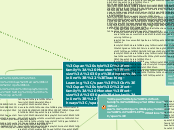Teaching-Learning
Critical Pathways
Setting Up the TLCP
GATHER EVIDENCE ABOUT STUDENT LEARNING
What evidence of student achievement do we currently have?
DETERMINE AREA OF GREATEST NEED
What does our evidence of student achievement tell us?
BUILD CLUSTERS OF EXPECTATIONS RELATED TO THE AREA OF GREATEST NEED
Which expectations can be clustered to address student learning?
What is our individual understanding of these expectations?
REVIEW CURRENT PRACTICE
What is our current practice in relation to our students' area of greatest need?
What does research tell us in relation to the area of greatest need?
DESIGN CLASSROOM ASSESSMENTS
What should students know, do and understand at the end of the pathway?
*Develop criteria that reflects what successful student work would look like in relation to the cluster of expectations selected.
*Develop a rubric.
*Develop a culminating post assessment task.
*Build a class data wall.
TLCP Actions
PLAN A SIX WEEK LEARNING BLOCK AND BUILD COLLECTIVE UNDERSTANDING ABOUT HOW YOU ARE GOING TO TEACH IT
How and what will we teach? What did we notice about our students' pre-assessment results? What is the "Big Idea" students are learning about? What thinking strategies will be used to support student learning? What will classroom assessment look like?
*Select a variety of rich texts for the instructional approaches.
*Select high yield teaching strategies that promote the greatest student growth and align best with the identified area of need.
SHARE EVIDENCE OF STUDENT LEARNING
*Identify one student as a “marker” student whose progress will be shared at each PLC
*Identify a number of students as “students to watch.” These students may need more precise scaffolding of their learning
*Bring in student work – both a strong piece and a piece of work that the teacher considers puzzling.
*Deconstruct student work using the criteria/rubric and suggest next steps in the improvement process.
*Share teacher practice. Discuss “presenting issues” that arise out of the teacher conversations.
*Hold “just in time” embedded conversations to find solutions for challenges.
*Reflect on the TLCP actions and next steps.
HAVE STUDENTS COMPLETE THE AGREED UPON CULMINATING TASK
Outcomes of the TLCP
CONDUCT TEACHER MODERATION
Is there a difference in student achievement?
*Each teacher brings student work to share and one piece is moderated by the group. The group then forms teams and moderates three or four more pieces of student work.
*Data for individual students are collected and placed on the classroom data wall
*Next steps are generated for the students.
ENGAGE IN REFLECTION
What did we learn? Based on inquiry, what do we want to do next? Were the most effective high-yield strategies chosen? What does or doesn’t student evidence tell us about student learning? How do we know that a high level of learning was achieved? What do we do for students who are not meeting with success?
Sources:
Capacity Building Series - Professional Learning Communities: A Model for Ontario Schools
http://www.edu.gov.on.ca/eng/literacynumeracy/inspire/research/plc.pdf
Capacity Building Series - Teaching-Learning Critical Pathways
http://www.edu.gov.on.ca/eng/literacynumeracy/inspire/research/teaching_learning.pdf
Components of a
Professional Learning Community:
1) Ensuring Learning for All Students
2) Focus on Results
3) Relationships
4) Collaborative Inquiry
5) Leadership
6) Alignment
PLCs focus on Results...
Classroom assessment promotes five key foci of assessment for learning:
1) providing specific feedback to students
2) involving students actively in their own learning
3) adjusting instruction according to assessment results
4) recognizing the profound influence assessment has on student motivation and self-esteem (both crucial influences on learning)
5) building the capacity of students to assess themselves and understand how to improve (Assessment Reform Group, 1999)
School-wide assessment promotes consistency and common language across the school.
• sharing student assessments with teams (grade, division, school improvement/leadership) and professional learning communities for the purpose of identifying patterns and anomalies so that actions are taken to address student needs
Large-scale assessment leads the discussion of questions involving long-term achievement patterns.
• How are the grades or divisions doing this year? Over time?
• How do we know how well they are doing?
• What are we doing to collectively improve learning?
• How do improvement trends of the school and district compare to the province?
